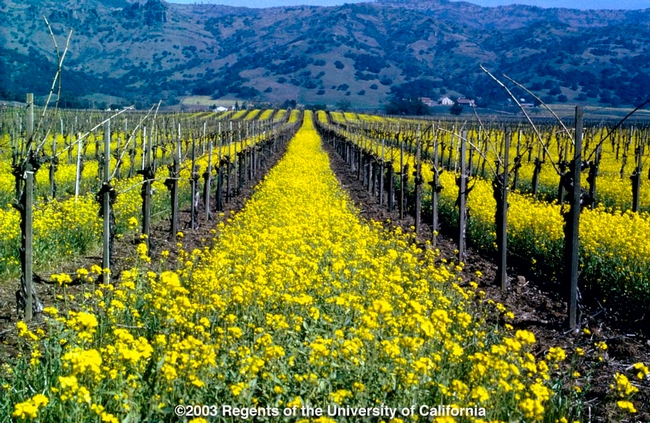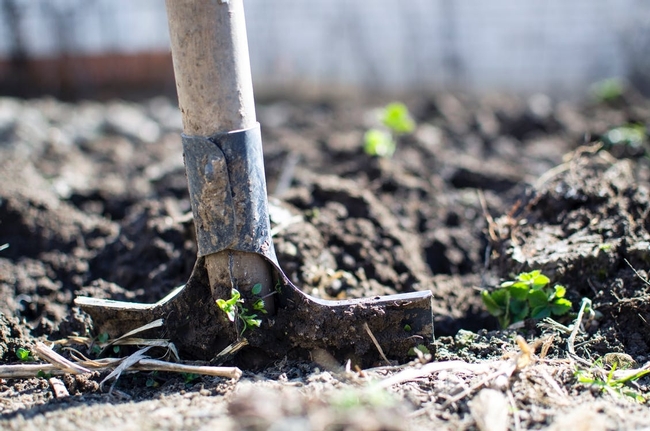I love cover crops. I really do. No, I don't think they are the solution to everything or that they work magic in every scenario. But for the scenarios they work in, they are marvelous. Why are these plantings so interesting, you ask? Well, let me tell you about my love interest with cover crops.
First of all, cover crops are one of the most cost effective ways to build soil organic matter. You can get cover crop seed for a few dollars a pound, grow it up, and terminate it once it goes to seed. All of that seed goes right back into the soil, giving a nice seed bank to reseed next season. Compare that to the cost of purchasing, transporting, and spreading mulch or compost and you have yourself a deal.
Cover crops can be selected for multiple benefits and to unique environments. Let's take an orchard system for example. In an orchard situated in certain temperature zones, there may be an increased risk of frost. Planting tall cover crops that come to maturity during the coldest days of the year put the orchard at greater risk for frost. Instead, this risk can be minimized by seeding low stature cover crops in January. The winter rains will assist in establishment, but the growth will be minimal during those frost-prone days of February. Come March and April, a fully established cover crop will provide erosion control and increased infiltration rates to keep rain onsite for the orchard.

Another thing to love about cover crops is their role in nutrient management. Nitrate leaching is a problem of excess fertilizer making its way below the root zone and into water systems. Think regulatory agencies, public health and environmental concerns, and paperwork. Grasses and brassicas are excellent nitrogen scavengers, helping prevent nitrate leaching to groundwater. These grasses and brassicas take up nitrogen and then slowly decompose, releasing that nitrogen back to the soil as a biologically available form for the cash crops to utilize. Legumes, on the other hand, work in an entirely different way to impact nitrogen. Utilizing nitrogen fixing nodules in their root systems, legumes fix atmospheric nitrogen and exude it as biologically available nitrogen for other plants to use. With a greater level of soil nitrogen available, less added nitrogen is required for optimal crop growth.
Weeds and pests. Carefully selected cover crops can use their super hero powers to combat villains that threaten crop viability. Want to suppress weed competition? Maybe plant a cereal rye or a mustard. Grow that up, knock it down, and create a nice mat to stifle weed growth. Aphids got you down? Try planting some legumes such as cowpea to attract lady beetles.

Soil structure. Oh, soil structure! Cover crops can provide multiple benefits here as well. Cover crop roots prevent erosion, keeping soil in place. In addition, they add organic matter to the soil as they grow and decompose. Roots of various cover crops, especially those in the daikon radish and sugar beet variety, have deep penetration and can break up compacted soil layers. In the process, cover crops increase soil porosity and infiltration, allowing water to move into and stay in the soil profile instead of running offsite. The change in soil structure to one of fluffier, porous, organic material provides habitat for increased soil biodiversity of microorganisms and decomposers. These guys help with nutrient cycling to maintain soil healthy and productivity. Over time, cover crops build soil tilth, soil porosity, soil organic matter, soil biodiversity, and overall soil structure that is easier to work with and produce in.
I could go on. The point is not that cover crops are the answer to everything, but rather that they provide multiple benefits for a good price. Cover crops are a low investment practice to test out when building healthy, resilient soils that will last for future generations of farmers.
Climate smart agriculture encompasses management practices that increase soil carbon sequestration, reduce greenhouse gas emissions, improve yields and efficiencies, and promotes climate resilience. The California Department of Food and Agriculture (CDFA) supports three funding opportunities in climate smart agriculture: the Healthy Soils Program, the State Water Efficiency & Enhancement Program, and the Alternative Manure Management Program.
In a collaborative partnership, CDFA and UC Agriculture and Natural Resources have teamed up to support 10 community education specialists throughout the state to provide technical assistance and outreach for the climate smart agriculture programs. As one of these technical assistance providers, my role is to promote and support the adoption of these programs in Ventura County. If you are interested in working with me, please contact me at amrowe@ucanr.edu.

